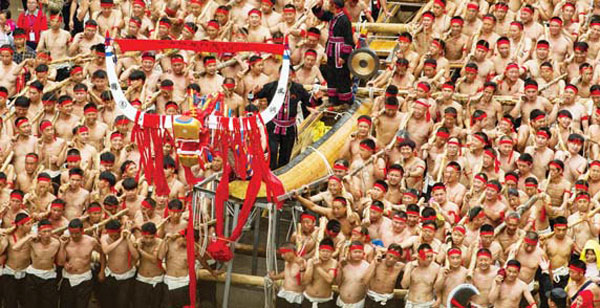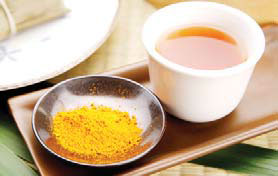Dumplings and dragon boats
Updated: 2016-06-03 08:19
By Pauline D Loh(China Daily Europe)
|
|||||||||
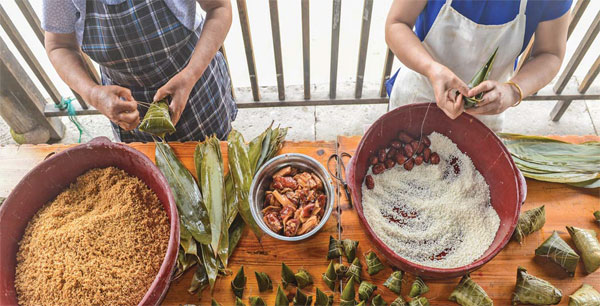
RICE DUMPLINGS evolved into regional specialties, mixed with different ingredients to make them more tasty. Xu Yu / Xinhua
Editor's note: To understand China, sit down to eat. Food is the indestructible bond that holds the whole social fabric together and it is also one of the last strong visages of community and culture.
Every Chinese child knows the story of Qu Yuan, a patriot who threw himself into the river in despair after his country was obliterated by invaders. He appears in textbooks even to this day as a shining example of devotion to king and country.
It is rather a sad story, but it does add to the romance that surrounds an important Chinese festival - Duanwujie, better known as the Dragon Boat Festival.
|
|
Qu Yuan was a court official and adviser to the ruler of the state of Chu during that time in history in China known as the Warring States Period (475-221 BC). However, he was dismissed and sent home, mainly because he didn't always tell his emperor what he wanted to hear.
Political rivals made sure he was never invited back to court, and he spent the rest of his life writing tragic epic poems, some of which have become classics.
When the state of Chu was swallowed by its stronger neighbor, Qu committed suicide in the river.
He was a well-loved man and the people frantically went out in boats to try to save him. They couldn't find his body, and legend has it that they then threw rice wrapped in bamboo leaves into the water so his body would not be eaten by the fish.
That is the most popularly accepted origin of rice dumplings and dragon boat races.
However, the mid-summer festival, had been observed long before that.
In the traditional Chinese lunisolar calendar, the sun is at its strongest during this time and the occasion was observed with the burning of cleansing herbs such as mugwort and the drinking of realgar wine, a sort of oral antiseptic against prevalent plagues and pestilence.
Realgar wine, or xionghuangjiu, has a mineral compound added to it that actually has a little arsenic. It was used in ancient times as an antidote to poisons. In the popular fairy tale of the Lady White Snake, a 1,000-year-old reptile takes on human form and falls in love with a poor but good-looking herbalist. She marries him and helps him develop his practice into a successful venture. But instigated by an unbendingly righteous monk, he forces her to drink realgar wine on Duanwu and she reverts to her original form, thus scaring him to death.
|
Realgar wine or xionghuang jiu, has a mineral compound added to it that actually has a little arsenic. Photos Provided to China Daily |
Despite his ingratitude, she goes on to offend the deities by stealing a magic herb to save him and ends up being captured and imprisoned under a pagoda on the banks of West Lake after giving birth to his child.
Duanwu only evolved into the Dragon Boat Festival, or simply the Rice Dumpling Festival, after Qu Yuan.
Dragon boats commemorate the people's efforts to save the patriot-poet, and now the races are contested not only in China, but all over the world where Chinese have settled. In countries and regions like Singapore, Hong Kong and Macao, expatriate communities also take part in the races with great enthusiasm. Dragon boat races have become an international sport, rather like Formula One on water.
The Chinese have always marked important occasions with special foods, and for Duanwu, it is always with rice dumplings.
The first dumplings were probably made with plain rice, but these zongzi, as they are known in Chinese, soon developed into regional specialties. The main ingredient is glutinous rice, which holds its shape after cooking and keeps well in the summer heat.
Millet, whole wheat grains, barley, red beans, mung beans or peanuts are also mixed into the rice to make it more tasty.
In South China, glutinous rice is also soaked in an alkaline solution that turns the grains yellow, and the process creates a chewy texture. These are jianshui zongzi, which are always eaten dipped into old-fashioned granulated sugar.
Apart from that, the folks in the southern coastal provinces prefer their rice dumplings savory rather than sweet, and the salted dumplings are filled with beans, pork and mushrooms.
Sometimes the rice is fried and seasoned with soy sauce to add fragrance and color. In Guangdong province, the dumplings get bigger and are shaped almost like miniature pillows, filled with five-spice coated fatty pork and plenty of mung beans cooked inside the rice. Often, traditional cooks also add a whole salted egg yolk.
In Beijing and other northern provinces, the preference is for sweet dumplings, filled with sugary red-bean paste. One of the most popular versions is a red bean and rice dumpling, with or without its ball of bean paste filling.
Other ingredients may include fragrant osmanthus flowers, lotus seed paste, walnuts, jujubes, melon seeds or sesame.
It is not just the flavors that vary from region to region. The dumplings come in different shapes as well.
The simplest dumplings are triangular, made with a single large bamboo leaf and simply folded over.
A more traditional shape is the perfect pyramid, with four corners. This is the dumpling that takes the most skill to make. Even if you get the shape right, the challenge is in how to tie it properly so it does not disintegrate in the boiling pot during the long cooking period.
paulined@chinadaily.com.cn
China's regional rice dumplings
Guangdong/Hong Kong
Savory rice dumplings are the order of the day, filled with lots of mung beans and a piece of pork fat that has been generously coated with Chinese five-spice powder. The Cantonese also like alkaline dumplings that are a clear crystalline amber, filled with a dollop of red bean paste.
Sichuan
The dumplings they like are mostly filled with a mixture of red beans and rice.
Shanghai/Zhejiang
Rice dumplings are also savory here, filled with meat and mushrooms. The younger gourmets like plain rice dumplings that are dipped into sugar.
Fujian/Taiwan
Bak chang, as the locals call their version, literally translates as meat dumplings. The glutinous rice is fried and flavored with soy sauce and sometimes garlic, and a balance of lean and fatty pork is added, together with dried Chinese mushrooms.
Henan/Hebei/Beijing
The preference is for sweet dumplings, made with a mixture of red beans and rice, and often stuffed with a whole Chinese jujube, a fruit that is abundant in the region.
Elsewhere in the world...
Singapore/Malaysia
The Straits Chinese, or Peranakan, were the first Chinese to settle in Southeast Asia centuries ago. Some believe that they are the descendants of the first group of immigrants sent down by Admiral Zheng He, the Ming Dynasty (1368-1644) navigator.
Peranakan cuisine is a mixture of Chinese cooking styles plus local ingredients, which often include tropical spices and herbs.
The rice dumplings Peranakan chefs make use minced meat, mainly chicken, flavored by lemongrass and pounded, toasted coriander seeds. They also use dried prawns, finely chopped, to add fragrance and flavor. Sometimes, chili is also added for extra spiciness.
Vietnam
Influenced by immigrants from the Chinese coastal provinces, Vietnamese rice dumplings are also mainly savory, filled with soy sauce, stewed belly pork and mushrooms.

Today's Top News
Eyeing the goal in European football
Suddenly, it's a small world
China looking forward to trade talks with EEU: MOC
Russia to promote EAEU-China economic cooperation
AIIB 'set to earn international trust, credibility'
EIB and AIIB to strengthen cooperation
Some 13,000 migrants saved, over 700 dead
Economists urge go-slow on EU's anti-dumping
Hot Topics
Lunar probe , China growth forecasts, Emission rules get tougher, China seen through 'colored lens', International board,
Editor's Picks

|
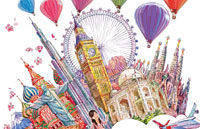
|
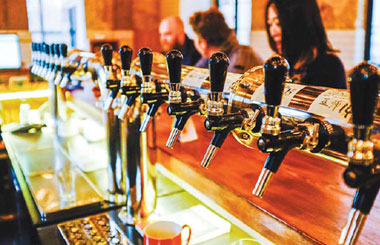
|
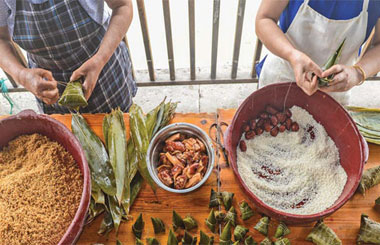
|

|

|
